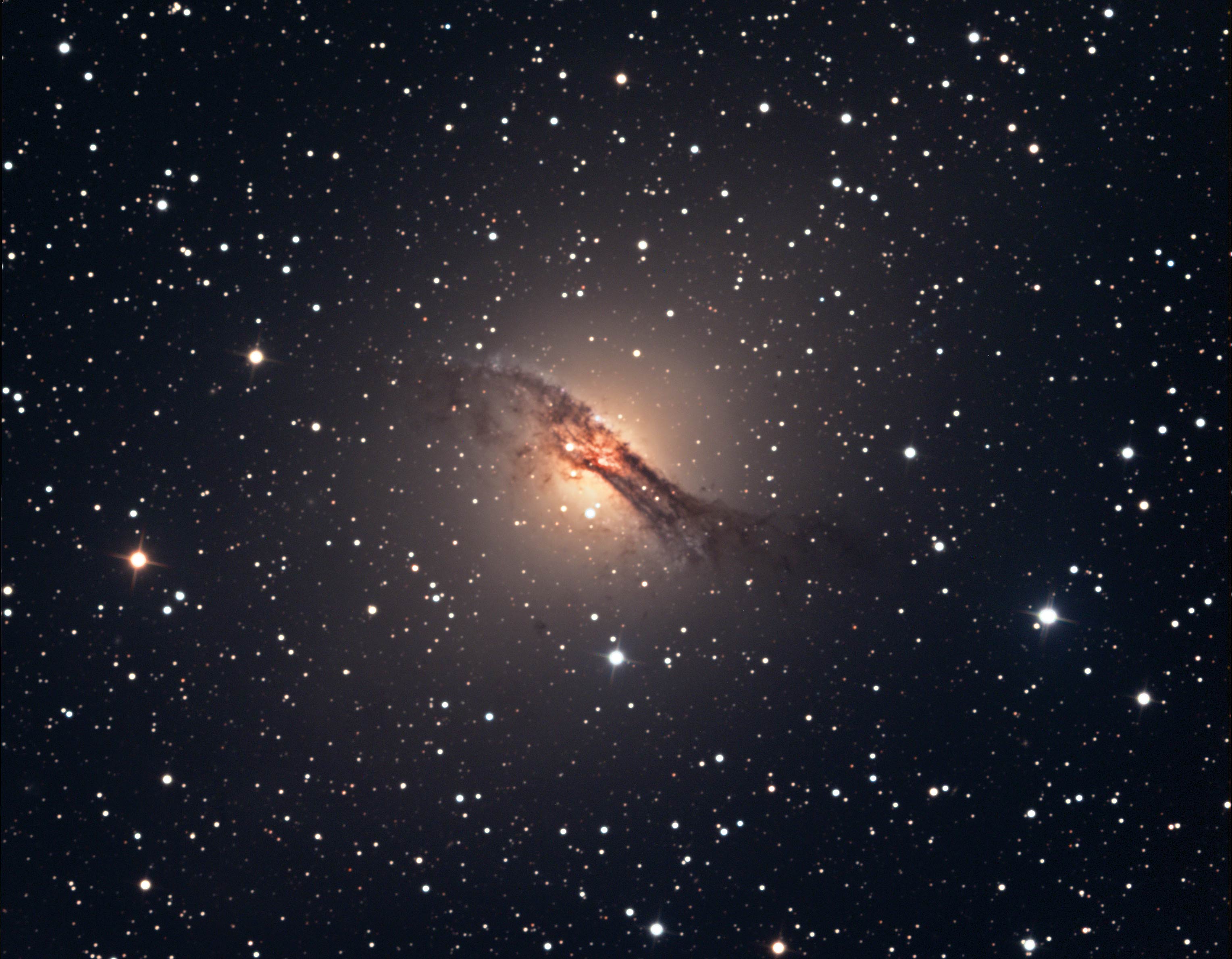
NGC 5128 Galaxy Centaurus A

Fred Calvert, Cold Spring Observatory
One
of the closest active radio galaxies to Earth, Centaurus A contains a super
massive black hole in it center estimated to be over a billion times the mass of
our sun - the result of a elliptical galaxy merging with a smaller companion
spiral galaxy. Centaurus A is a peculiar elliptical galaxy spanning some 60,000
light years across at a distance of 11 million light years from Earth. It was
discovered by Scottish astronomer James Dunlop in 1826 from his home in New
South Wales, Australia and is located North of the Southern Cross in the
constellation Centaurus. In 2015 the European Space Agency's Very Large
Telescope in Chile observed in Centaurus A what is proposed as a new class of
star clusters call dark globular clusters because of their unusually high mass
and dark matter components when
compared to the amount of stars in the cluster. Normal globular star
clusters are normally considered to be almost devoid of dark matter. Data for
this image was collected using a Planewave 27" f/6.6 telescope and FLI PL 09000
CCD camera. Exposure times were 45 minutes Luminous and 15 minutes each for Red,
Green and Blue.